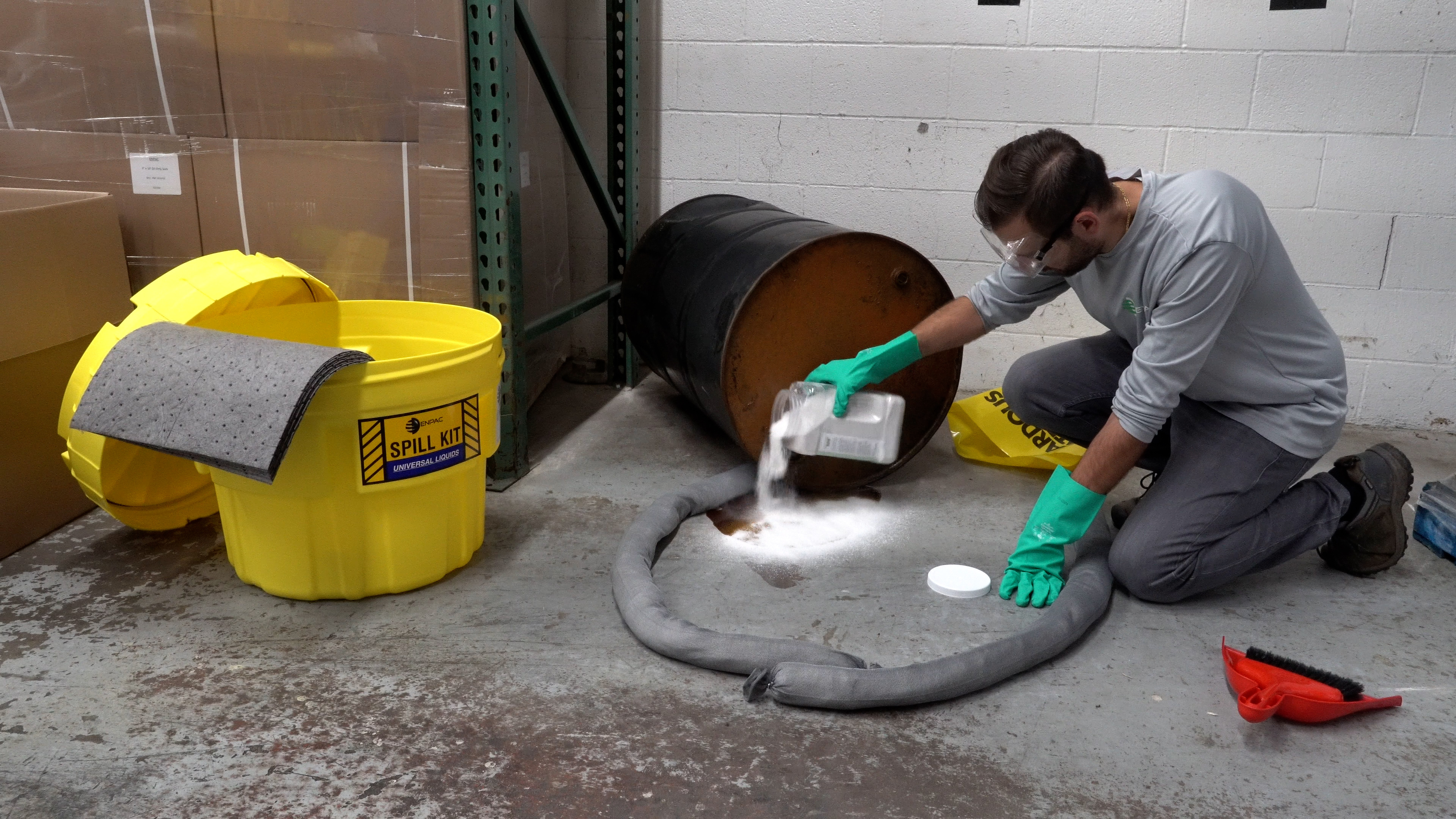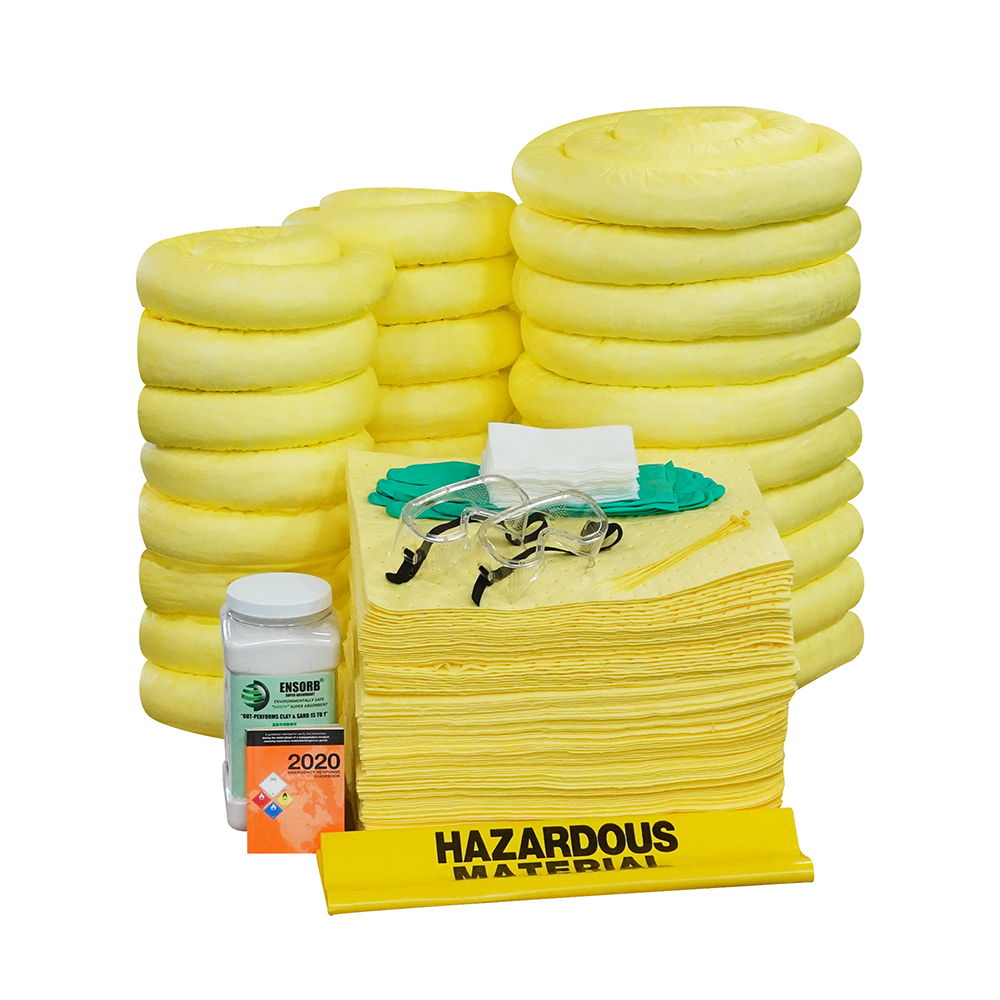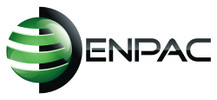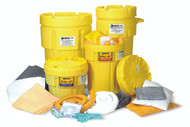How to Choose the Right Spill Kit for Your Facility
Posted by ENPAC LLC on Jun 28th 2023
Spill Kits are essential in environments where spills are likely to occur, such as industrial facilities, laboratories, healthcare settings, and transportation sectors. They are also used in emergency response situations to manage unexpected spills that may pose a risk to human health, the environment, or property.
Before choosing a spill kit based on the liquid spilled, there are other important factors to consider:
- Volume of Spills – Small spills to large spills, ENPAC has 5-gallon pails up to extra-large totes.
- Frequency of Spills – High-risk areas may need multiple kits or a larger capacity spill kit.
- Location-Specific Hazards – Outdoor areas may require waterproof kits; labs my need chemical-resistant PPE; or trucks on the road require truck-mounted kits.

What are the different types of Spill Kits?
With the above factors in mind, spill kits fall into three categories. These categories are based on the type of chemical or liquid being cleaned up.
- Universal – Highly versatile sorbents are gray and used in all industries. Universal absorbents are great for absorbing a wide range of fluids. These will absorb water and oil-based liquids.
- Aggressive/HazMat – These can range in a variety of colors with yellow being the most standard for visible hazardous material recognition. These are best used for clean-up of unknown, toxic, flammable, corrosive, and chemical substance spills.
- Oil-Only – These sorbents a frequently white and used for oils and hydrocarbons. They are water resistant and can absorb up to 25 times their weight. Ideal for absorbing oil off water, maintenance and repair when needing to avoid soaking up water and water-based fluids.
What is in a Spill Kit?
ENPAC offers a variety of different types of kits that include the following components that are impertinent to containing, cleaning, and disposal of spills:
- Container – This can range from a salvage drum (transportation of hazardous chemical clean-ups), a simple waterproof bag, wall-mounted lockers, truck-mounted containers, or storage totes.
- Absorbents – These can include absorbent pads, socks, or pillows and some combination of a them.
- Granular Absorbent – ENPAC’s ENSORB® granular absorbent, aka kitty litter, quickly absorbs liquids turning them into a solid. ENSORB® is lightweight, environmentally friendly, and landfill safe.
- Additional Accessories – Each kit will include some additional accessories to aid in clean up and disposal. They range from Nitrile gloves, goggles, disposal bags and ties and an emergency response guidebook. ENPAC also offers a guide to cleaning up a spill and SDS information.
Where should Spill Kits be placed?
Spill Kits should be placed in visible and accessible areas for quick access during a spill. If an area is high-risk for spills, consider placing near loading docks, storage areas, or in a lab. Facilities can use wall signs or floor markings for high visibility to the location of a spill kit. ENPAC offers wheeled drums and totes that are ideal for larger facilities or outdoor use.
What regulations, training, and disposal information need to be considered?
OSHA doesn’t mandate any specific kits, but it does require having accessible spill response tools, employee training and proper disposal procedures.
- Regulations - ENPAC spill kits do meet EPA and OSHA regulations.
- Training - Instruction documents are included in each Spill Kit, such as “When a Spill Occurs…”, an emergency response guidebook, and SDS to help train personnel on how to clean up a spill. It is important to hold regular drills and training sessions to ensure staff know how to find the kits, clean up a spill using each component, and where to dispose of any hazardous material.
- Disposal - Facilities should contact or work with their local disposal authority for disposing of a used spill kit with possibly hazardous material.

Do Spill Kits go bad?
It is possible for spill kits to go bad, but it will ultimately depend on the condition and any exposure to the elements. Moisture plays a key factor in whether or not the spill kit is still good or has gone bad. If the sorbents fall apart and crumble in your hands, it is time to replace.
What if the Spill Kit needs replacing?
If your spill kit has been sitting in a storage area for many years and you’re unsure about using the contents inside, or you’ve used all the contents for a spill, ENPAC offers refill kits for most spill kits. The refill kits will include all the contents that were inside the container, but without the container. By visiting the product page of your spill kit, you can find if the refill kit is an option (the part number will have -RF in it), and by viewing the contents list you can see the parts that can simply be replaced without purchasing the entire refill kit.

Spills are inevitable, but preparation is key. Having the appropriate spill response equipment on hand will accelerate the cleanup process, putting your company back to work quickly. For just about any spill, ENPAC has a suitable kit.
Contact ENPAC at info@enpac.com for any questions or a quote today!


